In the ever-evolving world of kitchen appliances, the juicer has become more than just a kitchen gadget; it’s a symbol of health and convenience. As consumers seek out innovative and efficient ways to incorporate fresh, healthy juices into their daily routines, the design of juicers has taken on a new level of importance. This article delves into the intricacies of ODM juicer design services, exploring the benefits, the design process, and how these services can tailor solutions to meet the modern juicing needs of brands and consumers alike.
The Evolution of Juicer Design: A Fresh Perspective
In the world of kitchen appliances, juicers have come a long way from the simple, bulky models of yesteryears. The evolution of juicer design has been a fascinating journey, marked by innovation, functionality, and aesthetic appeal. Let’s take a fresh perspective on how juicer design has transformed over the years.
Once, juicers were seen as a mere necessity for extracting fresh juice from fruits and vegetables. They were often large, unwieldy, and took up a significant amount of counter space. The design was straightforward, focusing on functionality over form. However, as the health and wellness industry grew, so did the demand for more sophisticated and stylish juicers.
Early juicers were mechanical, relying on a spinning blade to chop fruits and vegetables into tiny pieces, which were then pressed to extract the juice. These models were noisy, inefficient, and required a considerable amount of effort to clean. Despite their limitations, they laid the groundwork for the future advancements in juicer design.
As technology progressed, so did the design of juicers. The introduction of centrifugal juicers brought about a revolution in the industry. These juicers used a high-speed spinning basket to separate juice from pulp, resulting in a cleaner extraction process. The design of centrifugal juicers began to incorporate sleeker lines and more compact sizes, making them more appealing to consumers.
The next phase in juicer design saw the emergence of masticating juicers, also known as cold press juicers. These juicers operate at a slower speed, which helps to preserve the nutritional value of the juice by minimizing heat and oxidation. The design of masticating juicers often features a more robust and durable construction, with a focus on longevity and efficiency.
One of the most significant changes in juicer design has been the emphasis on user experience. Modern juicers are not just about extracting juice; they are designed to be intuitive, easy to use, and hassle-free. The user interface has evolved from complex to simple, with features like automatic pulp ejection, adjustable speed settings, and quiet operation becoming standard.
In addition to user experience, the aesthetic aspect of juicer design has gained prominence. Today’s juicers come in a variety of colors, materials, and shapes, allowing consumers to choose a model that complements their kitchen decor. The design has moved beyond the utilitarian to become a statement piece, reflecting the personal style of the user.
Another notable trend in juicer design is the integration of smart technology. Many modern juicers are equipped with digital displays, timers, and memory settings, making them more like kitchen appliances than simple tools. The design of these smart juicers often includes features like touch controls and wireless connectivity, enhancing the overall user experience.
The evolution of juicer design has also been influenced by sustainability concerns. As more consumers become environmentally conscious, juicers made from recycled materials or designed for longevity have gained popularity. The design of these eco-friendly juicers reflects a commitment to reducing waste and promoting sustainability.
Moreover, the rise of health-conscious lifestyles has led to the creation of specialized juicers. These include models designed for specific types of produce, such as wheatgrass or leafy greens, as well as juicers that cater to specific dietary needs, such as those for raw food enthusiasts or those following a vegan diet.
In conclusion, the evolution of juicer design has been a testament to the power of innovation and consumer demand. From bulky, inefficient machines to sleek, user-friendly appliances, the journey has been remarkable. As the health and wellness industry continues to grow, we can expect even more innovative and sophisticated designs to hit the market, making juicing an even more enjoyable and rewarding experience.
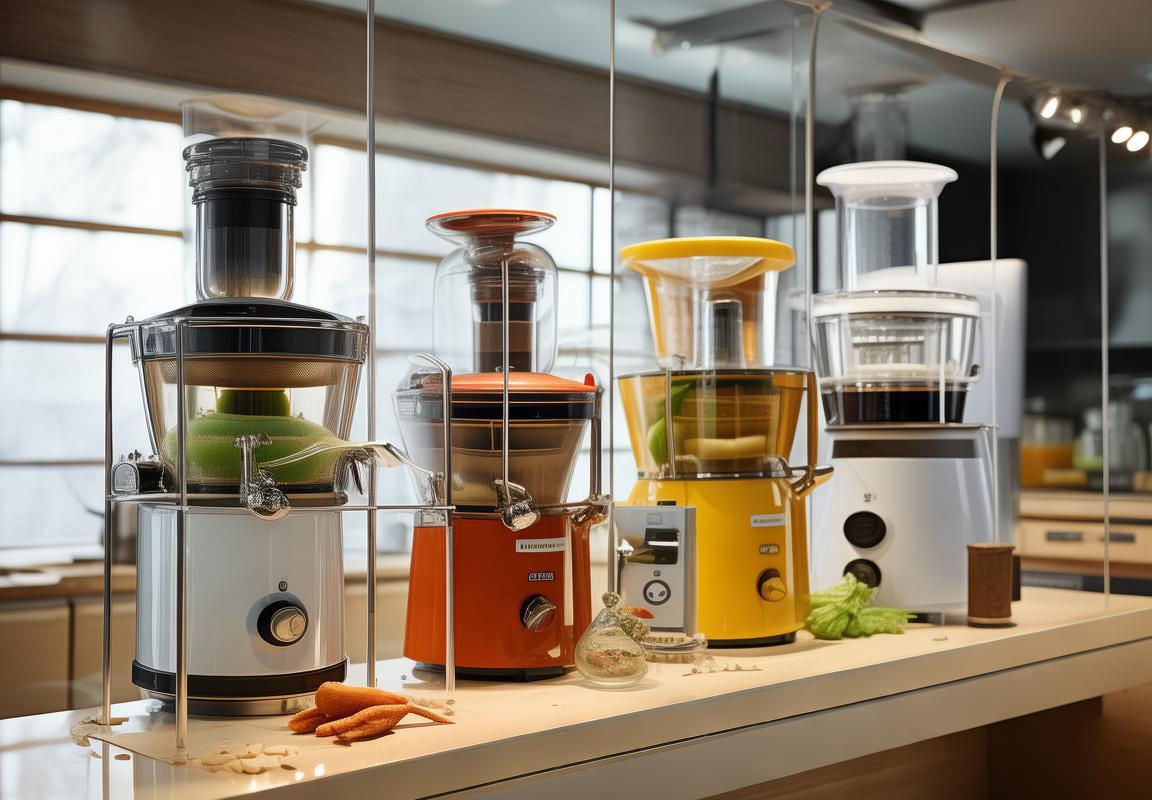
Understanding ODM: What It Means for Juicer Design
ODM, or Original Design Manufacturing, has become a cornerstone in the world of product development, especially in the realm of juicer design. It represents a collaboration between a manufacturer and a client, where the manufacturer takes a client’s vision and brings it to life with their expertise. This approach is reshaping the landscape of juicer design, offering a myriad of benefits that cater to both innovation and efficiency.
In the context of juicer design, ODM goes beyond the traditional manufacturing model. It’s not just about producing a product; it’s about crafting a solution that aligns with the client’s brand identity, market demands, and user expectations. This collaborative process begins with understanding the client’s needs and goals, which is crucial for creating a design that resonates with the target audience.
One of the key aspects of ODM in juicer design is the emphasis on customization. Each client brings a unique set of requirements, whether it’s the inclusion of specific features, the integration of innovative technologies, or the adoption of sustainable materials. ODM allows for this level of personalization, ensuring that the final product not only meets but exceeds the client’s expectations.
The design phase in ODM is where creativity meets practicality. Manufacturers employ a team of designers and engineers who work closely with the client to conceptualize and develop a juicer that is not only visually appealing but also functional and user-friendly. This collaboration often leads to the birth of innovative designs that stand out in a crowded market.
Another critical element of ODM is the integration of the latest trends and technologies. The juicing industry is continuously evolving, with consumers seeking more efficient, efficient, and health-conscious products. ODM manufacturers stay abreast of these trends, incorporating features like smart controls, high-speed blades, and easy-to-clean designs. This ensures that the juicers they produce are not only modern but also future-proof.
Quality control is paramount in the ODM process. Manufacturers adhere to stringent standards to ensure that each juicer meets the highest quality benchmarks. This includes rigorous testing for durability, performance, and safety. By managing every aspect of the production process, ODM providers can guarantee that the final product is reliable and long-lasting.
Cost-effectiveness is also a significant factor in ODM. By streamlining the design and production process, manufacturers can offer competitive pricing without compromising on quality. This benefits clients by providing them with a cost-effective solution that doesn’t sacrifice on the design or functionality of the product.
The flexibility of ODM is another advantage. Clients can request modifications or updates to the design at any stage of the process, allowing for a product that evolves with the market. This agility is particularly valuable in industries like juicing, where consumer preferences can change rapidly.
Moreover, ODM encourages a culture of innovation. Manufacturers are motivated to push boundaries and develop new designs that can disrupt the market. This not only benefits the client by giving them a unique product but also contributes to the overall advancement of the juicing industry.
From the client’s perspective, ODM offers peace of mind. By entrusting the design and manufacturing process to a specialized ODM partner, clients can focus on their core business activities while leaving the technical details to experts. This symbiotic relationship fosters a sense of trust and reliability.
In summary, ODM in juicer design is a comprehensive approach that combines creativity, technology, and a deep understanding of market needs. It’s a process that empowers clients to bring their vision to life, resulting in a product that is not only innovative but also competitive and sustainable. Whether it’s through customization, trend integration, quality control, cost-effectiveness, flexibility, or fostering innovation, ODM is a game-changer in the world of juicer design.
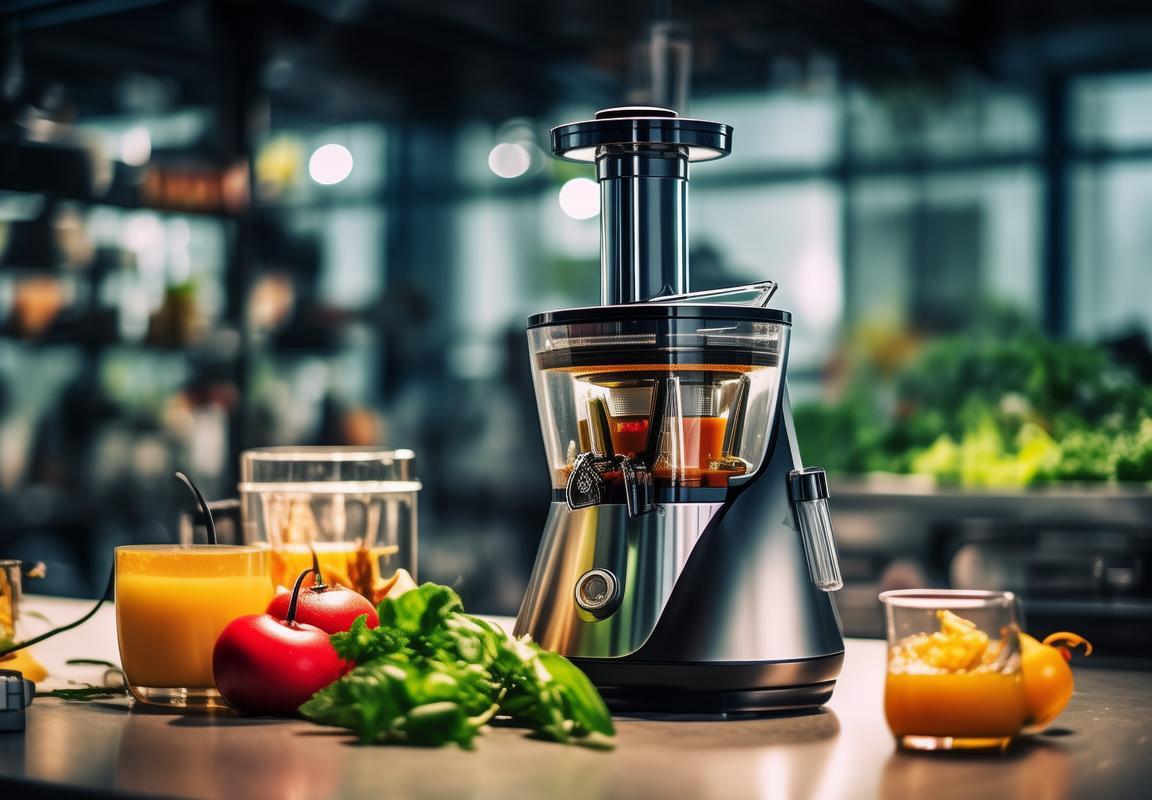
Key Features of a High-Quality ODM Juicer Design Service
A high-quality ODM (Original Design Manufacturing) juicer design service is the cornerstone of creating a product that stands out in a crowded market. Here are some of the key features that define such a service:
Efficiency in Design ProcessThe ODM service should be known for its streamlined design process, ensuring that each step is meticulously planned and executed. This efficiency is crucial for reducing time-to-market and keeping costs in check. By optimizing the design phase, manufacturers can deliver products that meet customer expectations without unnecessary delays.
Customization for Unique BrandsOne of the defining aspects of a quality ODM juicer design service is the ability to customize the design to fit a specific brand’s identity. This goes beyond just colors and logos; it involves understanding the brand’s target market and creating a juicer that resonates with their needs, aesthetics, and values.
Advanced Design Tools and TechniquesThe use of cutting-edge design tools and techniques is non-negotiable in a high-quality ODM juicer design service. From 3D modeling to computer-aided design (CAD) software, the ability to visualize and refine designs in a digital environment ensures that the final product is not only functional but also visually appealing and user-friendly.
Focus on User ExperienceAn ODM service should prioritize the user experience in its design. This means considering ease of use, maintenance, and cleaning, as well as the overall ergonomics of the juicer. A user-centric design not only makes the product more appealing to consumers but also enhances their satisfaction and loyalty.
Innovative Engineering SolutionsInnovation is at the heart of a great ODM juicer design service. This involves finding creative engineering solutions to common challenges, such as maximizing juice yield while minimizing noise and heat generation. The service should be adept at integrating the latest technology and materials to create a product that is both efficient and sustainable.
Robust Prototyping and TestingBefore a juicer hits the shelves, it should undergo rigorous prototyping and testing. A high-quality ODM service includes multiple stages of testing to ensure that the product meets safety standards, is durable, and performs as expected. This iterative process helps identify and correct any potential issues before production begins.
Compliance with Industry StandardsA key feature of an ODM juicer design service is its commitment to compliance with industry standards and regulations. This includes certifications for safety, health, and environmental concerns. Ensuring that the product meets these standards is crucial for both the manufacturer and the end consumer.
Collaborative Approach with ClientsEffective communication and collaboration are essential for a successful ODM relationship. The service should be willing to work closely with clients, providing regular updates and incorporating feedback throughout the design process. This ensures that the final product aligns with the client’s vision and market needs.
Cost-Effective Design and Production StrategiesWhile quality is paramount, a high-quality ODM juicer design service also understands the importance of cost-effectiveness. They should offer solutions that balance quality with price, ensuring that the client can produce the juicer at a competitive cost without compromising on design or functionality.
Long-Term Support and After-Sales ServiceA comprehensive ODM service doesn’t end with the design and production. It should include ongoing support, including technical assistance and after-sales service. This support is vital for maintaining the brand’s reputation and ensuring customer satisfaction in the long term.
Adaptability to Market TrendsThe ability to adapt to changing market trends is a hallmark of a top-tier ODM juicer design service. By staying abreast of current consumer preferences and emerging technologies, the service can help clients create products that are always relevant and appealing to their target audience.
In summary, a high-quality ODM juicer design service encompasses a range of features that span from efficient design processes and customization to advanced tools, user-centric design, innovative engineering, robust prototyping, compliance, collaborative relationships, cost-effective strategies, long-term support, and adaptability to market trends. These elements come together to create a juicer that not only meets but exceeds expectations in both form and function.
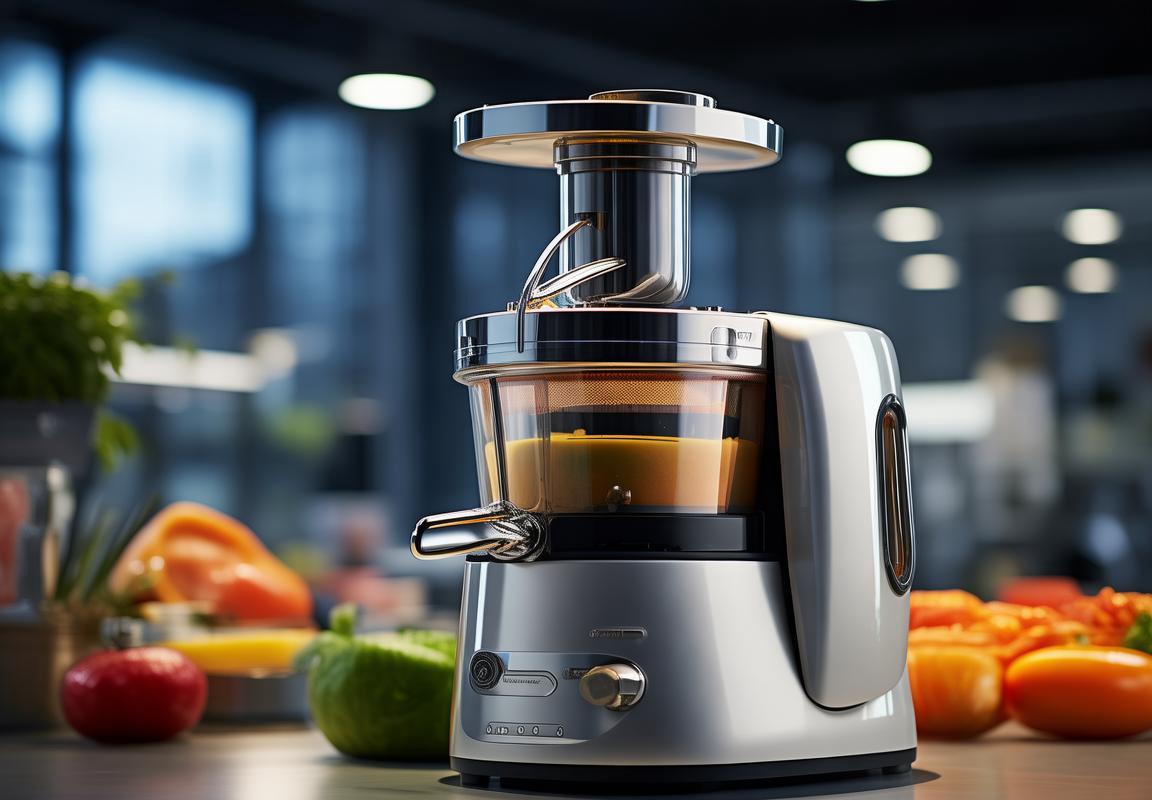
Benefits of Collaborating with an ODM Juicer Design Specialist
Collaborating with an ODM (Original Design Manufacturer) juicer design specialist can offer a myriad of benefits that can significantly enhance your product’s market appeal and performance. Here’s an exploration of these advantages:
Innovation at the Core: ODM specialists bring a fresh perspective to the design process, often incorporating cutting-edge technology and innovative features that might not be immediately apparent to an in-house team. This outside-in approach can lead to juicers that are not only ahead of the curve but also resonate with modern consumers’ demands for high-tech and efficient appliances.
Customization for Your Brand: Every brand has its unique identity and target market. An ODM juicer design specialist can work closely with you to create a product that aligns perfectly with your brand’s values and aesthetics. This level of customization ensures that your juicer is not just a functional tool but a statement piece that stands out on the shelf.
Cost-Effective Solutions: While some might assume that working with an ODM specialist could be more expensive, the opposite is often true. These experts have established supply chains and relationships with manufacturers that allow them to source components at competitive prices. This means you can get a high-quality juicer without breaking the bank.
Quality Control and Assurance: ODM specialists are committed to delivering a product that meets or exceeds quality standards. They manage the production process from start to finish, ensuring that every juicer is tested for durability, efficiency, and safety. This comprehensive approach minimizes the risk of defects and ensures that your customers receive a reliable product.
Streamlined Development Process: Time is a precious commodity in the fast-paced appliance market. An ODM juicer design specialist can streamline the development process, reducing the time from concept to market. This agility is crucial for staying ahead of competitors and meeting the ever-changing demands of consumers.
Market Insights and Trends: ODM specialists are not just designers; they are also market experts. They stay abreast of the latest trends and consumer preferences, which means they can suggest design modifications or features that could be the difference between a successful product and one that fades into obscurity.
Scalability and Flexibility: As your business grows, your juicer design may need to evolve. An ODM specialist can provide scalable solutions that allow you to expand your product line without compromising on quality. Whether you need a single model or a range of juicers, they can adapt to your needs.
Global Compliance and Certification: Navigating the complex web of international regulations and certifications can be daunting. ODM specialists have the expertise to ensure that your juicer design complies with global standards, which is essential for importing and exporting your products.
Brand Differentiation: In a crowded market, standing out is crucial. An ODM specialist can help differentiate your juicer through unique design elements, user experience, and functionality. This differentiation can make your brand memorable and encourage repeat purchases.
Sustainability and Eco-Friendly Designs: With the growing emphasis on sustainability, an ODM specialist can incorporate eco-friendly design elements into your juicer. This not only appeals to environmentally conscious consumers but also positions your brand as a leader in responsible product design.
Customer-Centric Designs: Understanding the needs and desires of your customers is key. ODM specialists are adept at creating customer-centric designs that address common pain points and enhance user satisfaction. This focus on the end-user can lead to higher customer loyalty and positive word-of-mouth.
Resource Optimization: By leveraging the expertise of an ODM specialist, you can optimize your internal resources. This means your team can focus on core competencies while the design and production of your juicer are handled by professionals who are dedicated to these aspects.
In conclusion, the benefits of collaborating with an ODM juicer design specialist are multifaceted, offering a blend of innovation, cost-effectiveness, quality, and market insight. This partnership can be the cornerstone of a successful juicer product that not only meets but exceeds consumer expectations.

The Design Process: From Concept to Market-Ready Product
In the world of product design, the journey from a mere concept to a market-ready product is a complex and intricate process. This is particularly true for ODM (Original Design Manufacturer) juicer design services, where the end result must not only meet functional requirements but also resonate with consumers’ tastes and preferences. Here’s a detailed look at the various stages of this transformative process:
The initial spark of an idea often comes from observing market trends, consumer needs, and technological advancements. Designers and engineers gather inspiration from these sources to create a concept that hasn’t yet graced the shelves of retail stores.
This concept is then translated into sketches, which serve as the blueprint for the juicer’s design. These sketches are refined and developed into a 3D model, allowing for a more realistic representation of the product’s form and function.
Once the 3D model is approved, it’s time to delve into the engineering aspect. Engineers analyze the model to ensure that it can be manufactured efficiently and cost-effectively. This stage involves creating detailed technical drawings and specifications that will guide the production process.
The design is then passed on to prototyping, where a physical model of the juicer is constructed. This prototype is crucial for testing the design’s feasibility and identifying any potential issues before mass production. It allows designers to make necessary adjustments and improvements.
User experience is a pivotal factor in juicer design. Prototypes are tested by a focus group of potential users to gather feedback on ergonomics, ease of use, and overall satisfaction. This iterative process helps refine the design to better cater to the target audience.
As the design nears completion, the focus shifts to materials and manufacturing processes. The choice of materials is crucial for the juicer’s durability and aesthetic appeal. The manufacturing process must also be optimized to ensure consistent quality and minimize waste.
Regulatory compliance is another critical aspect of the design process. Juicers must meet safety standards and certifications in various markets, which can require additional design considerations and testing.
With the design and engineering fully vetted, the production phase begins. This involves setting up the manufacturing line, ensuring that all components are produced to the correct specifications, and assembling the juicers. Quality control checks are conducted at every stage to maintain consistency.
The final step is packaging design. The packaging not only protects the juicer during shipping but also serves as the first point of contact with consumers. It must convey the product’s features, benefits, and brand identity while being visually appealing and functional.
Once the packaging is in place, the product is ready for market launch. This phase includes marketing and promotional activities to create awareness and generate interest among potential buyers.
Throughout the entire design process, communication and collaboration between designers, engineers, manufacturers, and marketing teams are key. Each stage must be carefully managed to ensure that the final product aligns with the original vision while also being practical and appealing to consumers.
The journey from concept to market-ready product is a testament to the creativity, precision, and dedication of the design team. It’s a process that combines art and science to deliver a product that not only performs its intended function but also stands out in a crowded marketplace.
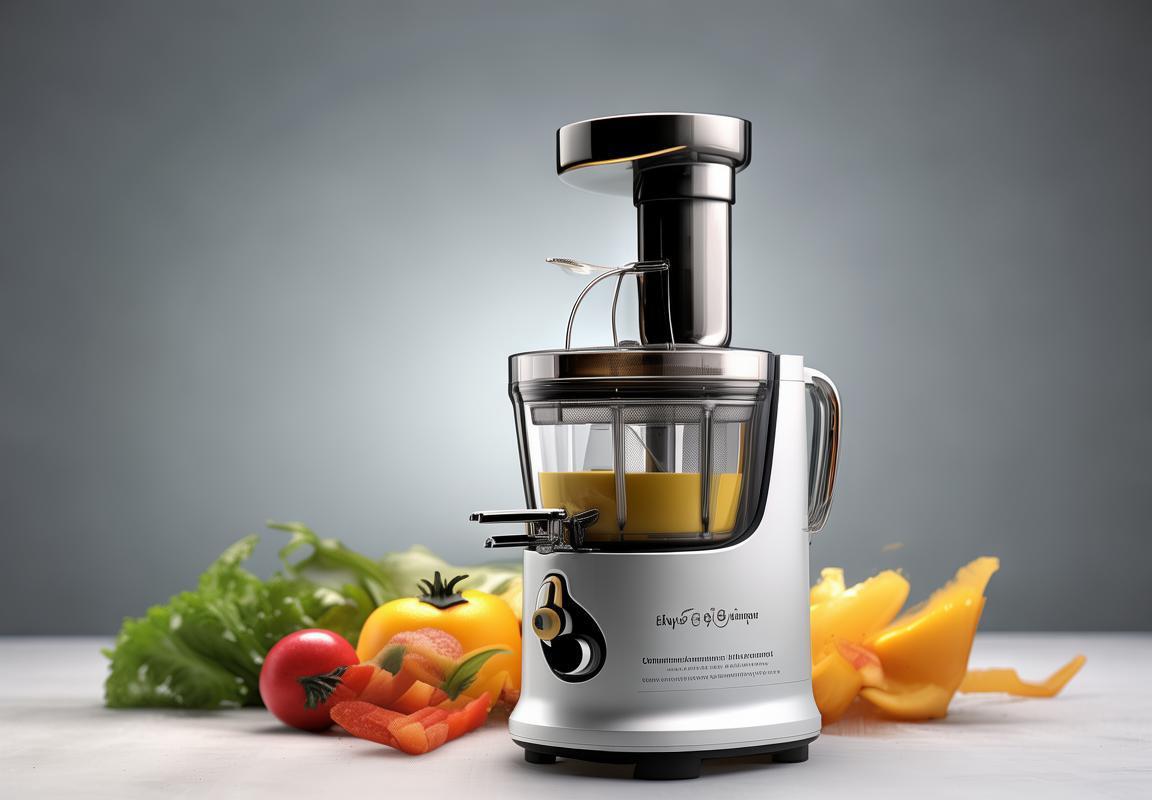
Innovative Solutions for Modern Juicing Needs
In today’s fast-paced world, the demand for fresh, healthy lifestyles has surged, and juicing has become a staple in many people’s daily routines. To meet this modern juicing need, designers are constantly seeking innovative solutions that not only enhance the juicing experience but also cater to the evolving preferences of consumers. Here’s a look at some of the groundbreaking ideas shaping the future of juicing technology.
The Integration of Smart TechnologySmart juicers are no longer just a dream; they’re a reality. These devices are equipped with advanced features like touchscreens, Bluetooth connectivity, and even app integration. Users can customize their juicing process, track their nutrition intake, and even receive tips on how to make the most of their fruits and vegetables.
Ergonomic Design for Comfortable UseA juicer that’s easy to use is a juicer that will be used more frequently. Modern juicers are now being designed with ergonomic considerations in mind. The handles are contoured for a comfortable grip, the feeding chutes are larger to reduce the need for chopping, and the overall weight of the machine is carefully balanced to make it easier to maneuver.
Efficiency and SpeedTime is of the essence, especially for busy individuals who are looking to start their day with a nutritious juice. High-speed juicers are becoming more popular, as they can process a wide variety of ingredients quickly and efficiently, reducing the time spent in the kitchen.
Versatility in FunctionalityNo longer are juicers just for fruits and vegetables. Innovators are now creating multi-functional devices that can perform a range of tasks, from blending smoothies to making nut milks and baby food. This versatility allows for a single appliance to cater to diverse dietary needs and preferences.
Noise Reduction TechniquesOne of the biggest complaints about juicers has always been the noise they produce. Designers are now incorporating noise reduction techniques, such as sound-dampening materials and better seals, to ensure that juicing doesn’t disrupt the peace of your kitchen or home office.
Sustainability and Eco-Friendly MaterialsThe environmental impact of consumer goods is a growing concern. As such, juicers are being made with sustainable materials that are not only eco-friendly but also durable. Biodegradable parts and recycled plastics are increasingly being used in juicer design.
Easy to Clean and MaintainA juicer that’s a chore to clean can be a deterrent to frequent use. Modern juicers are designed with self-cleaning functions and removable parts that can be easily washed and dried. Some models even come with nooks and crannies that are designed to prevent food particles from getting stuck.
Customizable Filters for Personalized JuicesPeople’s tastes vary widely when it comes to juice consistency. To cater to this, juicers now come with customizable filters that can adjust the level of pulp in the juice. Whether you prefer a smoothie or a more chunky juice, the choice is yours.
Integration of Health TrendsJuicing is closely tied to health trends, such as the raw food diet, veganism, and gluten-free living. Designers are taking these trends into account by creating juicers that can handle a wide range of ingredients, from leafy greens to nuts and seeds, ensuring that health-conscious consumers can make the juices they need to support their lifestyles.
Aesthetics and StyleAesthetics are just as important as functionality in the modern consumer’s mind. Juicers are now being designed with sleek, modern aesthetics in mind, with finishes that complement any kitchen decor. From brushed stainless steel to vibrant colors, the choice is as varied as the juices themselves.
Accessibility for All Ages and AbilitiesThe design of juicers is also considering accessibility for all users. This means larger buttons, clear displays, and intuitive interfaces for the elderly or those with disabilities. The goal is to make juicing an activity that can be enjoyed by everyone, regardless of their physical abilities.
The future of juicing is all about innovation and adapting to the changing needs of consumers. From smart technology to sustainable design, these solutions are not just enhancing the juicing experience but also setting the stage for what’s to come in the world of health and wellness.
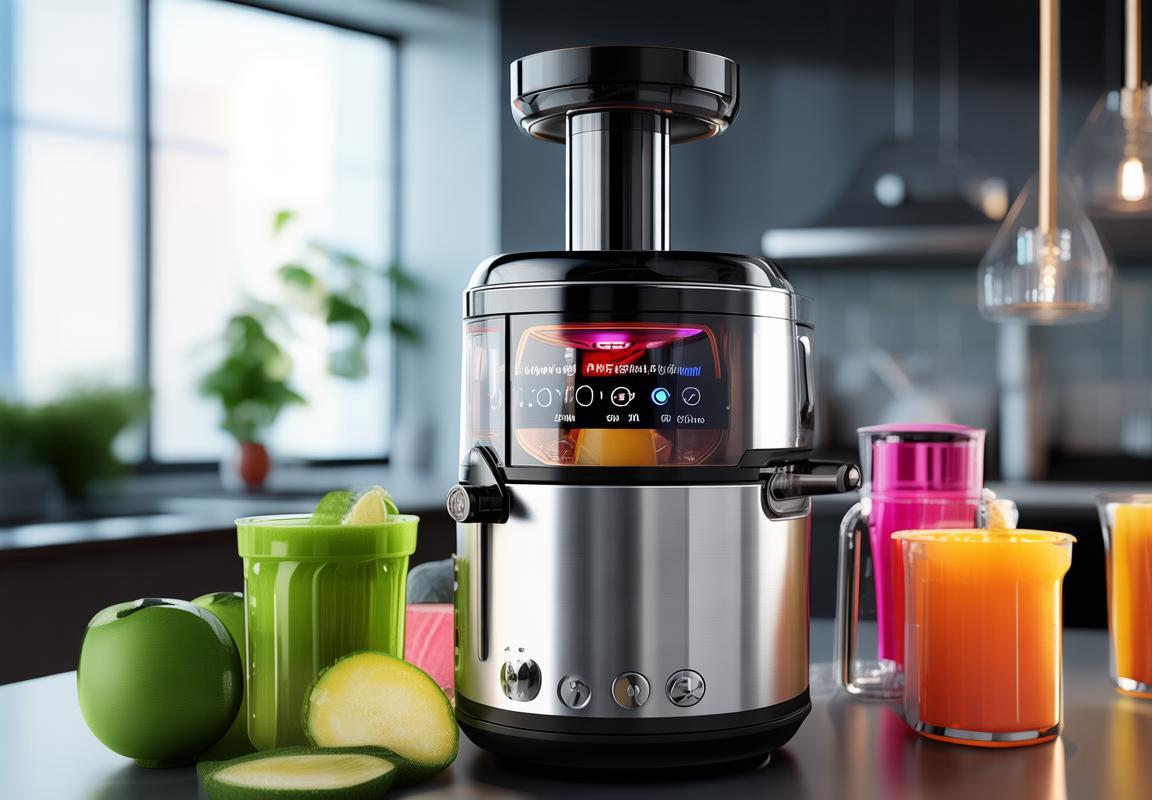
Customization and Flexibility: Tailoring Juicers to Your Brand
In the world of juicers, standing out in a crowded market is paramount. This is where customization and flexibility come into play, allowing brands to tailor their juicers to resonate with their target audience and establish a unique identity. Here’s a closer look at how customization and flexibility can make a difference in the juicing industry.
Designing with Brand Identity in MindThe aesthetic appeal of a juicer can significantly influence a consumer’s purchasing decision. An ODM (Original Design Manufacturer) juicer design service understands this and offers customization options that align with a brand’s identity. From color schemes that reflect a brand’s ethos to unique features that embody its values, the design process ensures that the juicer is not just a functional appliance but a representation of the brand itself.
Personalizing Features for Specific MarketsDifferent regions and demographics have varying needs and preferences when it comes to juicers. An ODM service can customize the features of a juicer to cater to specific market segments. For instance, a juicer designed for a health-conscious audience might include advanced filtration systems, while one targeted at environmentally conscious consumers could be made from sustainable materials and designed for energy efficiency.
Material Selection to Match Brand ValuesThe materials used in a juicer can convey a brand’s commitment to quality and sustainability. An ODM juicer design specialist can help select materials that not only enhance the longevity of the product but also align with a brand’s core values. Whether it’s opting for BPA-free plastics or using recycled metals, the choice of materials can be a powerful statement that resonates with the brand’s audience.
Incorporating Branding ElementsBranding extends beyond just the visual design; it’s about integrating elements that make the product instantly recognizable. An ODM service can incorporate branding elements such as logos, typography, and color schemes into the juicer’s design, ensuring that it not only performs well but also communicates the brand’s message effectively.
Adapting to Changing TrendsTrends in the juicing industry can shift rapidly, from the popularity of cold-pressed juice to the rise of nutrient extraction. An ODM juicer design service can offer flexibility to adapt to these trends, allowing brands to stay relevant without needing to invest in a complete redesign each time. This agility ensures that the brand’s juicers are always at the forefront of consumer demands.
Creating a Seamless User ExperienceCustomization isn’t just about looks; it’s also about functionality. An ODM service can work with brands to design juicers that provide a seamless user experience. This includes ergonomic handles, intuitive controls, and easy-to-clean components that make the juicing process as enjoyable as possible for the consumer.
Understanding Regulatory RequirementsNavigating the complexities of regulatory requirements is another area where customization and flexibility are crucial. An ODM specialist can ensure that the design of the juicer complies with international safety standards, certifications, and labeling requirements, which is essential for brand reputation and market entry.
Scalability for GrowthAs a brand grows, so does its product line. An ODM service can provide scalability in design, allowing brands to expand their juicer range without compromising on quality or consistency. This means that whether a brand is introducing a new model or a limited edition, the design can evolve while maintaining the brand’s core aesthetic.
In conclusion, customization and flexibility are not just about making a juicer look unique; they are about creating a product that speaks to the brand’s identity and values. An ODM juicer design specialist can help brands create a market-ready product that not only meets consumer expectations but also sets them apart in a competitive landscape. By understanding the nuances of branding, market trends, and user experience, these specialists can tailor juicers to perfectly fit a brand’s vision and the diverse needs of consumers.
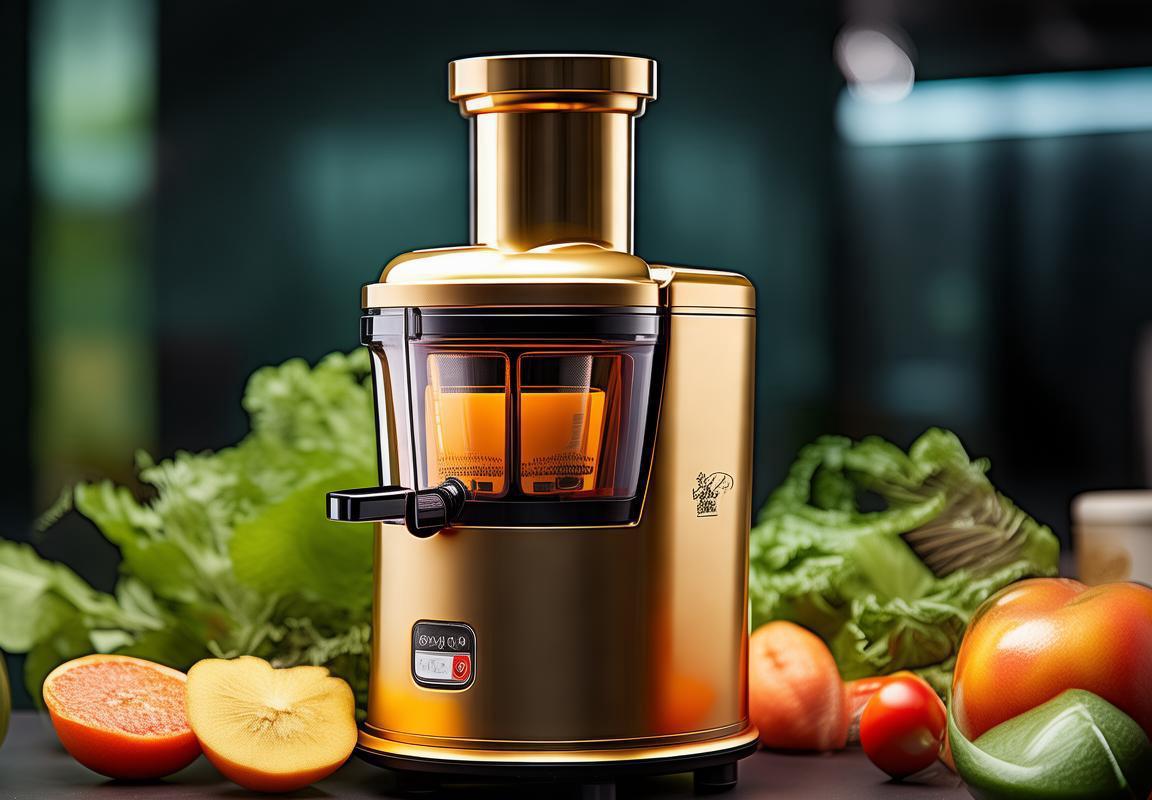
Case Studies: Success Stories of ODM Juicer Design
In the world of juicers, where sleek design meets practical functionality, the success stories of Original Design Manufacturer (ODM) juicer design are as varied as they are inspiring. Let’s delve into a few of these tales, showcasing how ODM services have transformed concepts into market-ready products that resonate with consumers.
One such story is that of “GreenFresh,” a brand known for its eco-friendly approach to health and wellness. The brand approached an ODM juicer design specialist with a vision to create a juicer that not only extracted the maximum nutrition from fruits and vegetables but also left a minimal environmental footprint. The ODM team worked closely with GreenFresh to develop a juicer made from recycled materials, featuring a unique, energy-efficient motor that significantly reduced power consumption. The end result was a product that not only met but exceeded the brand’s expectations, leading to a surge in sales and a strong market presence.
Another captivating story comes from “VitaBliss,” a company specializing in health-focused kitchen appliances. They sought an ODM partner to design a juicer that catered to both beginners and experienced juicers alike. The ODM specialist understood the need for a user-friendly design that would encourage new users while also offering advanced features for seasoned juicers. The collaboration led to the creation of a multi-functional juicer with adjustable speeds, a built-in recipe guide, and a sleek, modern design. VitaBliss’ customers were thrilled with the innovation, and the juicer quickly became a top seller, helping the brand establish itself as a leader in the juicing market.
For “PurePress,” a family-owned juicer brand, the challenge was to create a juicer that would stand out in a crowded market by offering a premium experience at a competitive price. The ODM design service stepped in to help craft a juicer that was not only visually appealing but also packed with features. The final product, a high-performance, stainless steel juicer with a durable, easy-to-clean design, was a hit. The brand’s customers praised the juicer’s performance and the attention to detail, propelling PurePress to new heights in the industry.
In another instance, “HealthyHarvest” wanted to expand its product line with a juicer that would cater to the specific needs of people with dietary restrictions. The ODM specialist collaborated with the brand to develop a juicer that was not only versatile enough to juice a wide range of ingredients but also had features like a cold-press mechanism that preserved the nutritional value of the fruits and vegetables. The juicer became a game-changer for HealthyHarvest, attracting a loyal customer base that appreciated the brand’s commitment to health and innovation.
The story of “JuiceJazz” is one of rebranding and renewal. The company, once known for its standard-issue juicers, wanted to make a bold statement with a new line of products. An ODM juicer design specialist was brought on board to create a line that was both stylish and functional. The ODM team introduced a range of juicers with innovative features such as a variable pulp control, a noise-reduction system, and a compact, space-saving design. JuiceJazz’s new line was a hit, reinvigorating the brand and boosting its image as a trendsetter in the juicing world.
Each of these success stories highlights the unique benefits that an ODM juicer design specialist can bring to a brand. From eco-friendly materials to user-centric design, the ODM process allows companies to differentiate themselves in a competitive market. By working closely with an ODM partner, brands can ensure that their juicers not only meet consumer expectations but exceed them, creating a product that is not just a part of the market but a leader in its niche. Whether it’s about innovation, sustainability, or rebranding, the power of a well-designed juicer, crafted through the collaborative efforts of an ODM specialist, can make all the difference.

The Future of Juicer Design: What to Expect
In the ever-evolving world of juicing, the design of juicers has become a pivotal factor in capturing consumer interest and market share. As technology advances and consumer preferences shift, the future of juicer design promises to be both innovative and user-centric. Here’s a glimpse into what we can expect:
The integration of smart technology is on the rise, with juicers becoming more than just appliances. They’re becoming part of a connected kitchen ecosystem. Imagine a juicer that not only extracts the most from your fruits and vegetables but also syncs with your smart devices to track nutritional intake and suggest recipes based on your health goals.
Material advancements are another area of growth. We’re seeing a shift from traditional plastics to eco-friendly materials that are not only sustainable but also durable. These materials not only reduce the environmental impact but also enhance the aesthetic appeal of juicers, making them a more attractive addition to modern kitchens.
Designs are becoming more compact and space-saving, recognizing that not everyone has the luxury of a spacious kitchen. Juicers that can be easily stored or even designed to blend seamlessly into kitchen cabinets are becoming increasingly popular. The focus is on creating products that are as functional as they are stylish.
The customization of juicers is also a trend that’s gaining momentum. Personalization goes beyond just color choices; it extends to features that cater to specific dietary needs or juicing habits. For instance, some juicers might offer adjustable settings for different types of produce, from leafy greens to hard fruits, ensuring optimal extraction every time.
Sustainability is a driving force in the design world, and juicers are no exception. We’re seeing a rise in the use of solar-powered juicers and those that are designed to be fully recyclable at the end of their life. This shift reflects a broader consumer awareness of environmental issues and a desire to make more eco-conscious purchasing decisions.
In terms of functionality, the next generation of juicers might include features like self-cleaning capabilities, which would reduce the time and effort required to maintain the appliance. Additionally, the inclusion of advanced filtration systems could mean that the juice produced is not only fresh but also free from impurities.
The future of juicer design also hinges on the health and wellness trends that are shaping consumer behavior. As the importance of a balanced diet and clean eating becomes more pronounced, juicers that can process a wider variety of ingredients, including nuts, seeds, and grains, are likely to become more common. This would open up a world of nutritional possibilities for juice enthusiasts.
Another interesting development is the potential for juicers to become part of a holistic wellness routine. Integrating juicers with other kitchen appliances, such as blenders or smoothie makers, could create a multi-functional kitchen tool that caters to a range of health-conscious consumers.
The rise of health-conscious celebrities and influencers is also shaping the future of juicer design. As these figures endorse specific brands or products, we can expect to see a surge in the popularity of certain features and designs that resonate with their followers.
Lastly, the global market for juicers is diverse, and the future of design will need to account for cultural differences and preferences. This means that juicers designed for the Western market might differ significantly from those tailored for Asia or South America, taking into consideration local dietary habits and aesthetic preferences.
In conclusion, the future of juicer design is poised to be a blend of technological innovation, environmental responsibility, and personalized health solutions. As consumers continue to seek out healthier lifestyles, the juicer is set to become an even more integral part of the kitchen, offering users a seamless, efficient, and sustainable way to incorporate fresh, nutritious beverages into their daily routines.

How to Choose the Right ODM Juicer Design Service for Your Needs
When it comes to selecting the right Original Design Manufacturer (ODM) juicer design service for your needs, there are several key factors to consider that will ensure a partnership that yields not just a product, but a brand differentiator. Understanding these aspects is crucial in navigating the marketplace and making an informed decision.
Understanding Your Brand’s IdentityYour brand’s identity is the core of your juicing product. An ODM service should begin by understanding the essence of your brand—its values, target audience, and the unique selling proposition (USP). This insight allows the design team to create a juicer that not only meets functional requirements but also resonates with your brand’s ethos.
Functionality and User ExperienceThe design of a juicer is not just about aesthetics; it’s about enhancing the user experience. A quality ODM service will focus on the functionality of the product, ensuring that it is easy to use, durable, and efficient. Considerations such as quiet operation, intuitive controls, and ease of cleaning are all part of the user experience that an ODM service should address.
Material Selection and Quality ControlThe materials used in the construction of your juicer are critical to its performance and lifespan. An ODM partner should have a deep understanding of materials that are food-safe, durable, and aesthetically pleasing. They should also implement rigorous quality control measures to ensure that each juicer meets the highest standards.
Customization CapabilitiesEach brand has its unique specifications, and a reliable ODM should be able to customize the design to meet these needs. This could include branding elements, specific features, or even a completely unique design that sets your product apart. Customization isn’t just about physical changes; it’s also about adapting the design to your brand’s market strategy.
Technology IntegrationModern juicers are increasingly technological marvels, with features like smart sensors, digital displays, and app connectivity. An ODM with a forward-thinking approach will integrate the latest technology into the design, making your product not just a functional appliance but a high-tech one that appeals to tech-savvy consumers.
Regulatory ComplianceNavigating the regulatory landscape can be complex, especially for products that come into contact with food. A competent ODM service should be well-versed in local and international regulations, ensuring that your juicer meets all safety standards and certifications.
Prototyping and TestingBefore a product hits the market, it needs to be tested extensively. A quality ODM will provide a prototyping phase where the design is tested for durability, functionality, and user experience. This iterative process ensures that any potential issues are addressed before the final product is produced.
Communication and CollaborationA strong working relationship with your ODM is key to a successful partnership. Look for a service that values open communication and collaboration. They should be proactive in sharing progress, addressing concerns, and providing solutions. This two-way dialogue ensures that the final product aligns with your expectations and the market needs.
Cost-Effectiveness and ScalabilityThe cost of production can significantly impact your profitability. An ODM that offers cost-effective solutions without compromising on quality is essential. Additionally, as your business grows, your ODM should be able to scale production efficiently, ensuring a smooth transition from small-batch to large-scale manufacturing.
Long-Term Relationship PotentialThe ideal ODM partnership is one that can grow with your brand. Look for a service that is committed to long-term relationships and has a proven track record of supporting brands through various stages of their development.
In conclusion, choosing the right ODM juicer design service involves a comprehensive evaluation of various aspects such as brand alignment, functionality, material quality, customization, technology integration, regulatory compliance, prototyping, communication, cost-effectiveness, scalability, and long-term relationship potential. By carefully considering these elements, you can select a partner that not only produces a high-quality juicer but also becomes an integral part of your brand’s journey.